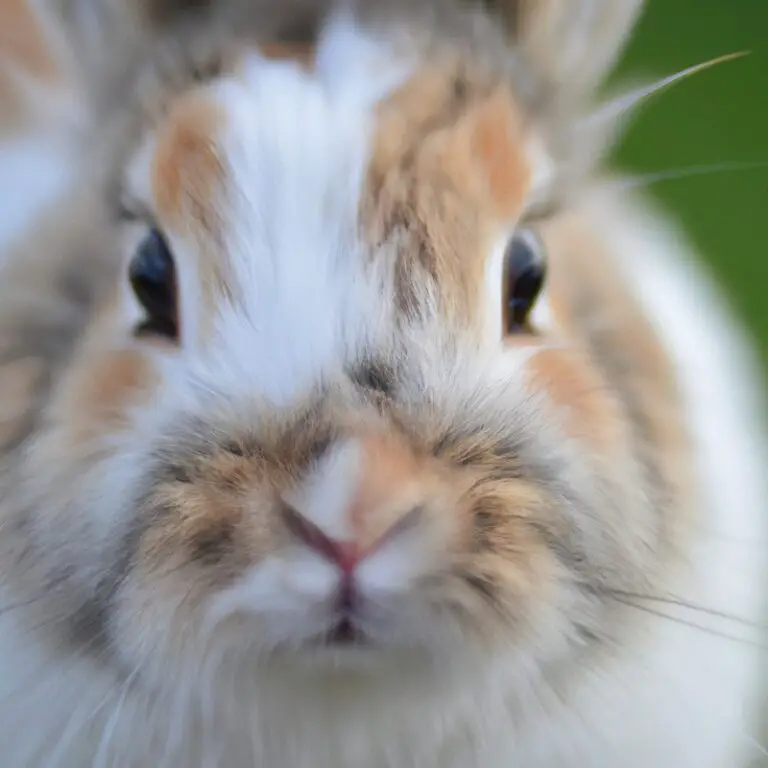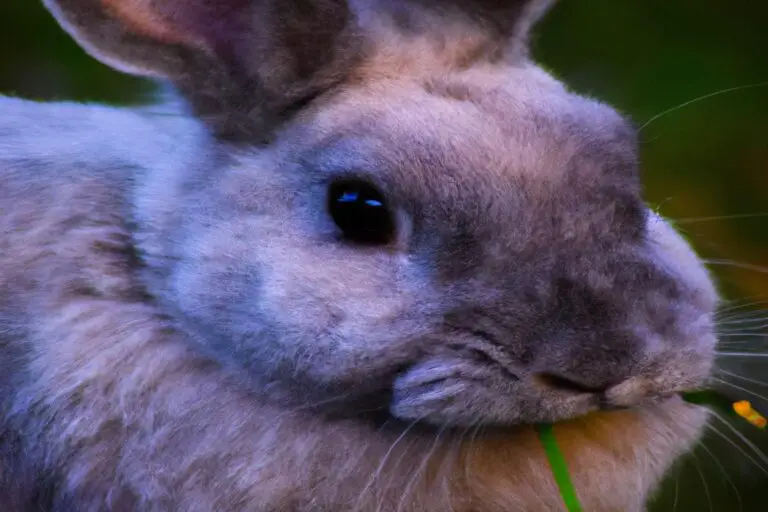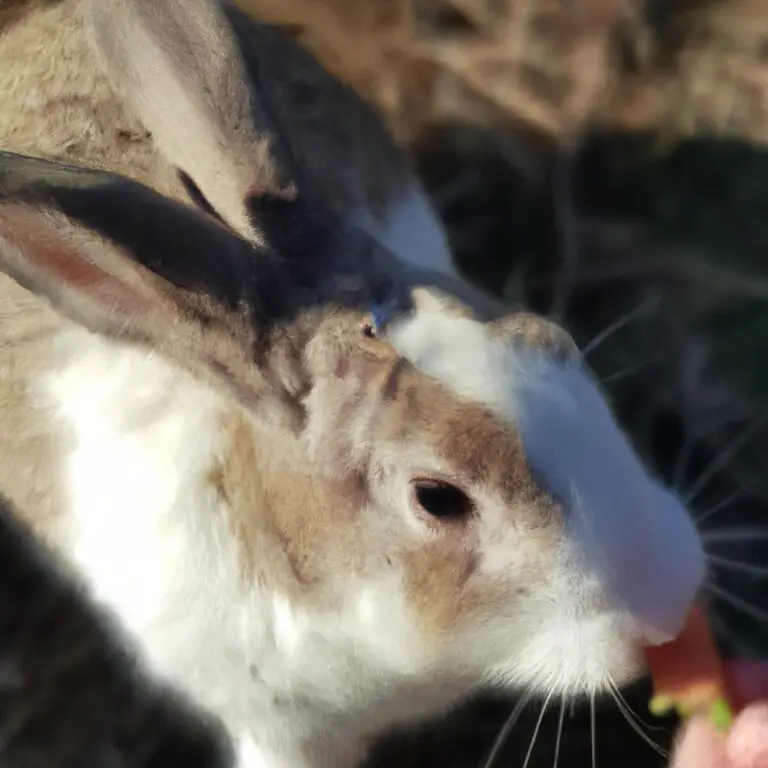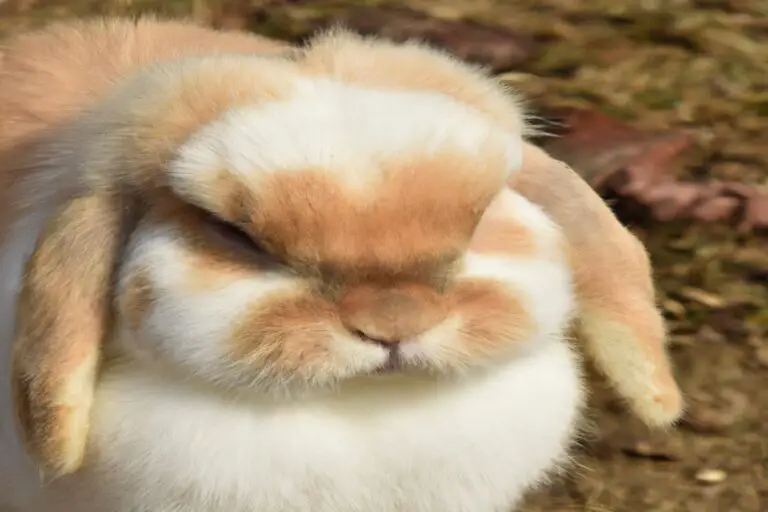What Does Rabbit Spray Look Like? Find out now!
Key Takeaways:
- Rabbit spray often appears as a milky white liquid.
- Rabbit spray is typically emitted in short bursts.
- The smell of rabbit spray is often pungent and strong.
- Rabbit spray is primarily used for territorial marking purposes.
Have you ever wondered what rabbit spray looks like? Well, you’ve come to the right place! In this article, we’re going to dive deep into the world of rabbit spraying and unravel the secrets behind this intriguing behavior.
Get ready to learn how to identify the characteristics of rabbit spray, distinguish it from urine, and understand why rabbits engage in this behavior in the first place.
We’ll even equip you with effective cleaning methods and tips to prevent spraying. So, let’s jump right in and uncover the mysteries of rabbit spray together!
| Rabbit Spray | Appearance |
| 1. | The rabbit spray is a liquid substance. |
| 2. | It is typically transparent or slightly yellowish in color. |
| 3. | The spray may have a mild fragrance or be odorless. |
| 4. | It can be found in small spray bottles for easy application. |
| 5. | Some rabbit sprays may have additional ingredients, such as essential oils, to provide added benefits. |
Why do rabbits spray?
Rabbits spray for territorial marking and when they are experiencing hormonal changes.
Understanding the reasons behind rabbit spraying
Rabbits spray for a few specific reasons.
One is marking their territory, which is common for both males and females.
Spraying also happens during mating season, as a way of attracting a partner.
Stress or anxiety can also cause rabbits to spray.
Understanding these reasons can help you address any issues your rabbit may be facing.
It’s important to provide a safe and secure environment, and to ensure your rabbit is properly socialized and cared for.
Working with a veterinarian can help determine any underlying health or behavioral issues.

Hormonal changes and territorial marking
Hormonal changes play a significant role in rabbit territorial marking. When rabbits reach sexual maturity, they undergo hormonal shifts that can cause them to spray urine.
This behavior is a way for rabbits to mark their territory and communicate with other rabbits.
The urine they spray contains pheromones that communicate information about their reproductive status and territory ownership. It’s important to note that not all rabbits will spray, as it can depend on factors such as gender and individual temperament.
Behavioral problems and stress factors
Behavioral problems in rabbits can arise from various stress factors.
These stress factors can include changes in environment, lack of social interaction, improper handling, and inadequate mental stimulation.
Rabbits may exhibit behavioral problems such as spraying, biting, chewing on furniture or wires, and aggression when they are feeling stressed or anxious.
It’s important to identify the specific stress factors affecting your rabbit and provide an appropriate and enriching environment to help alleviate their behavioral problems.

What does rabbit spray look like?
Rabbit spray is a liquid substance that rabbits release to mark their territory. It has a strong odor and is typically yellow or brown in color.
Identifying the characteristics of rabbit spray
Rabbit spray, also known as marking or territorial spray, has specific characteristics that can help identify it.
Here’s what to look for:
- Strong odor: Rabbit spray has a pungent and musky smell that can be quite distinct.
- Yellowish color: The spray tends to have a yellowish hue, which can be seen on surfaces where the rabbit has marked its territory.
- Stains and drips: Rabbit spray can leave stains and small drips on walls, fences, or other objects within its territory.
- Location patterns: Rabbits tend to spray in specific areas to mark their territory, so you may notice a pattern of spray marks in certain spots.
Remember, if you come across rabbit spray, it’s best to clean it up promptly to discourage further marking and prevent any lingering odors.
Physical appearance and texture
The physical appearance and texture of rabbit spray can vary depending on the specific product you are using.
Generally, rabbit sprays come in liquid form and have a thin, watery consistency.
They are often clear or have a slight color tint.
The texture can feel slightly sticky or tacky when applied to surfaces.
Some rabbit sprays may also have a mild scent to them, although there are unscented options available as well.
When using a rabbit spray, it’s important to follow the instructions provided by the manufacturer for best results.
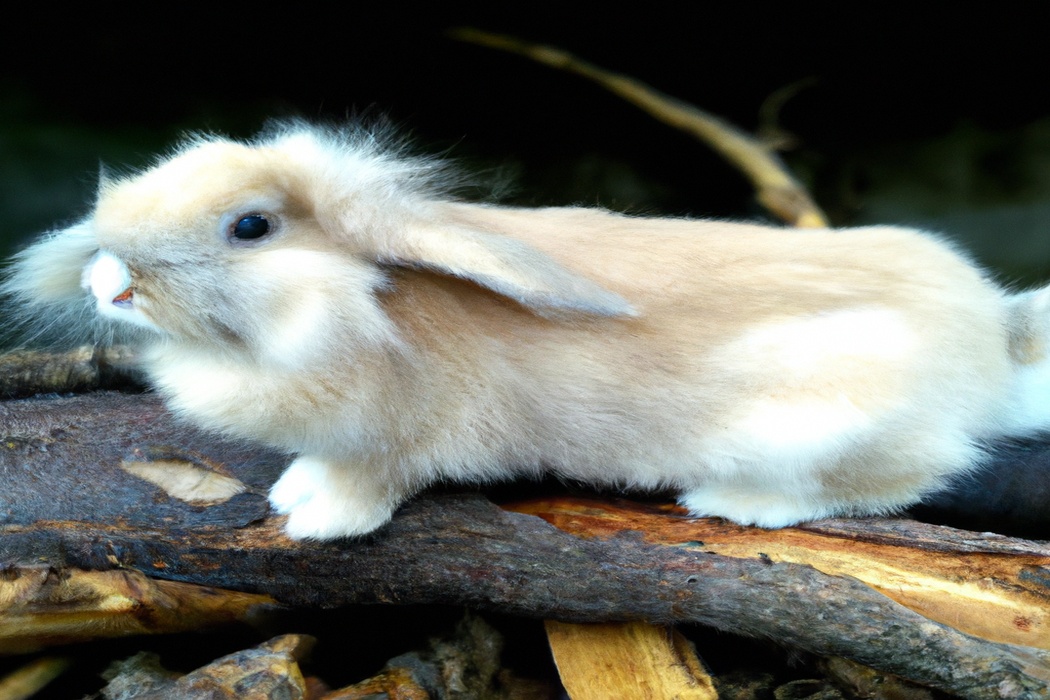
Differences between rabbit urine and rabbit spray
Rabbit urine and rabbit spray have distinct differences that can help you identify them.
- Odor: Rabbit urine has a strong, distinct odor similar to ammonia, while rabbit spray has a more pungent and musky odor.
- Texture: Rabbit urine is liquid and typically leaves wet spots or puddles, whereas rabbit spray is a mix of urine and glandular secretions, leaving a sticky or greasy residue on surfaces.
- Purpose: Rabbit urine is a normal bodily function used for marking territory and eliminating waste, while rabbit spray is typically used as a defensive mechanism to ward off predators or communicate aggression.
- Frequency: Rabbits urinate regularly to keep their bladders empty, while spray is released in specific situations such as potential danger or during mating behavior.
Knowing the differences between rabbit urine and rabbit spray can help you better understand your pet rabbit’s behavior and keep their living area clean and odor-free.
How to clean rabbit spray?
To clean rabbit spray, use effective methods such as removing the excess spray, blotting the affected area, and using a mild cleaning solution.
Gather materials like paper towels, water, mild detergent, and a clean cloth.
Follow the step-by-step process by blotting the area, applying the cleaning solution, and gently scrubbing.
Effective methods for cleaning rabbit spray
To effectively clean rabbit spray, start by removing any excess spray from the affected area using paper towels or a cloth.
Then, mix a solution of equal parts white vinegar and water, and apply it to the spray stain.
Gently blot the area with a clean cloth until the stain disappears.
For stubborn stains, you can also use a pet stain remover specifically designed for rabbit spray.
Remember to always test any cleaning solution on a small, inconspicuous area first to avoid damaging the surface.
Materials needed for cleaning
For cleaning rabbit spray, you will need a few materials to effectively remove the odor and stains. Here are the essential items you’ll need:
- Rubber gloves: Protect your hands from the chemicals in the cleaning solutions and avoid direct contact with the spray.
- Paper towels or absorbent cloth: These will help absorb and remove the excess spray, as well as blot any stains or wet areas.
- Mild detergent or soap: Use a gentle cleanser to clean the affected surfaces, ensuring it does not contain any harsh chemicals that could harm the fabric or material.
- White vinegar: Dilute vinegar with water and use it as a natural odor neutralizer. It can help eliminate the unpleasant smell of rabbit spray.
- Enzyme cleaner: If the spray has left behind stubborn stains or odors, an enzyme cleaner specifically designed for pet messes can be effective in breaking down the organic materials.
- Spray bottle: Use a spray bottle to mix and apply the cleaning solutions evenly on the affected areas.
Remember to always follow the instructions on the cleaning products you use and to test any solution on a small, inconspicuous area before applying it to the entire surface. With these materials in hand, you’ll be well-prepared to tackle the task of cleaning rabbit spray effectively.
Step-by-step cleaning process
Here’s a step-by-step cleaning process for rabbit spray:
- Put on protective gloves and a mask to avoid direct contact with the spray and minimize exposure to any harmful particles.
- Use a paper towel or a clean cloth to gently blot any excess spray from the surface. Avoid rubbing as it may spread the stain further.
- Mix a solution of mild dish soap and warm water in a bucket or bowl.
- Dip a sponge or cloth into the soapy water and gently dab the affected area. Work from the outer edges inward to prevent spreading.
- Rinse the sponge or cloth and repeat the dabbing process until the spray residue is removed.
- If necessary, you can also use a small brush, like a toothbrush, to clean hard-to-reach areas or stubborn stains. Again, use gentle motions to avoid damaging the surface.
- After the spray is completely removed, use a clean cloth dampened with plain water to rinse away any soap residue.
- Allow the area to air dry or use a clean towel to gently blot away any excess moisture.
That’s it! Following these steps should help you effectively clean rabbit spray from surfaces.
How to prevent rabbit spraying?
To prevent rabbit spraying, you can focus on minimizing their spraying behavior by providing a suitable living environment, spaying or neutering your rabbits, and consistently training and socializing them.
Tips for minimizing rabbit spraying behavior
To minimize rabbit spraying behavior, it’s important to create a comfortable environment for them. Here are some tips:
- Provide ample space: Make sure your rabbit has enough room to roam and play. A larger living area can help reduce stress and the need to mark territory.
- Neuter or spay your rabbit: This can help decrease hormone-related spraying behaviors.
- Keep a clean litter box: Regularly clean the litter box to ensure your rabbit always has a clean space to eliminate. This can discourage spraying outside the box.
- Use positive reinforcement: Reward good behavior with treats and praise, and redirect any spraying behavior to more appropriate areas.
- Bond with your rabbit: Spending time with your rabbit, providing enrichment, and giving them plenty of attention can help reduce stress and the need for territorial marking.
Remember, each rabbit is unique, and it may take time and patience to overcome spraying behavior. Consulting with a veterinarian or a rabbit behaviorist can provide further guidance tailored to your rabbit’s specific needs.
Providing a suitable living environment
Creating a suitable living environment for your rabbit is essential to their well-being. Here are some key aspects to consider:
- Space: Provide your rabbit with enough space to hop, play, and stretch their legs. A spacious, bunny-proofed area or an appropriately sized hutch and run combination is ideal.
- Flooring: Choose flooring that is safe and comfortable for your rabbit, such as a solid surface or soft matting. Avoid wire flooring, as it can cause discomfort or injury.
- Hideaways: Rabbits love having hiding spots where they can feel secure. Add tunnels, boxes, or huts in their living space to provide cozy hideaways.
- Toys and Enrichment: Keep your rabbit mentally stimulated by providing a variety of toys and enrichment activities. Chew toys, toss toys, and puzzle toys can help prevent boredom.
- Ventilation and Temperature: Ensure proper ventilation in the rabbit’s living area to prevent overheating or stuffiness. Keep an eye on the temperature to ensure it remains within a comfortable range for your furry friend.
- Socialization: Rabbits are social animals, so it’s important to spend time with them daily. Interact with your rabbit, provide gentle petting, and engage in playtime to keep them happy and well-adjusted.
Remember, by providing a suitable living environment, you are setting the foundation for a healthy and contented rabbit.
Spaying or neutering rabbits
Spaying or neutering rabbits is an important procedure for their overall health and behavior. It helps prevent unwanted litters and reduces the risk of certain reproductive cancers.
The procedure is typically done by a veterinarian under anesthesia.
Recovery time is usually quick, and rabbits can resume their normal activities soon after. It’s best to consult with a veterinarian to determine the appropriate age and timing for spaying or neutering your rabbit.
Consistent training and socialization
Consistent training and socialization are key to preventing rabbit spraying.
Establish a routine for training your rabbit from a young age, using positive reinforcement techniques.
This will help them understand appropriate behavior and minimize the chances of spraying.
Socializing your rabbit with other animals and people is also important, as it will help them feel less threatened and reduce the likelihood of spraying as a defensive response.
Regular interaction and positive experiences will go a long way in preventing spraying behaviors.
Frequently Asked Questions
Can all rabbits spray?
Can all rabbits spray? No, not all rabbits can spray.
Only male rabbits, also known as bucks, have the ability to spray.
They use this behavior to mark their territory or attract mates. Female rabbits, on the other hand, do not have this capability.
So, if you have a female rabbit as a pet, you don’t need to worry about them spraying.
What are some common triggers for rabbit spraying?
Rabbits may spray urine to mark their territory or communicate with other rabbits. Some common triggers for rabbit spraying include:
- Hormonal changes: Unneutered rabbits, especially males, may spray more frequently to establish dominance or attract a mate.
- Stress: Changes in the environment, such as new pets or loud noises, can cause rabbits to feel anxious and resort to spraying.
- Territorial behavior: If a rabbit feels its territory is being invaded, it may respond by spraying to mark its space.
- Lack of litter box training: Rabbits that are not properly trained to use a litter box may resort to spraying as a form of communication.
- Medical issues: In some cases, underlying health problems like urinary tract infections or bladder stones can lead to excessive spraying.
How can I differentiate between rabbit urine and spray?
To differentiate between rabbit urine and spray, you can look for some key features.
Rabbit urine is usually a clear or light yellow liquid with a strong ammonia-like odor.
It is often found in small amounts in one spot.
On the other hand, rabbit spray, or marking behavior, is a thicker, stickier substance with a musky smell.
It is typically sprayed in a more dispersed pattern to mark territory.
Keep in mind that both urine and spray can vary in color and intensity depending on factors like diet and health.
Are there any health concerns associated with rabbit spraying?
Yes, there are some health concerns associated with rabbit spraying.
- Allergies: Rabbit spray contains a substance called urine proteins, which can cause allergies in certain individuals.
- Respiratory issues: Inhaling the strong odor of rabbit spray can irritate the respiratory system, leading to coughing, wheezing, and breathing difficulties.
- Eye and skin irritation: Direct contact with rabbit spray can cause redness, itching, and irritation of the eyes and skin.
To minimize these health concerns, it is important to handle rabbit spray with care, avoid direct contact, and ensure good ventilation in the area where rabbits are kept.
If you or someone in your household experiences severe symptoms after exposure to rabbit spray, seek medical attention.
Can rabbit spraying be a sign of an underlying issue?
Yes, rabbit spraying can indeed be a sign of an underlying issue. Rabbits typically spray urine to mark their territory or when they feel threatened or stressed.
However, excessive spraying or a sudden change in spraying behavior may indicate a health problem or emotional distress.
In such cases, it’s important to monitor your rabbit’s overall well-being and consult a veterinarian if you have concerns. Additionally, providing a comfortable and enriched environment for your rabbit can help reduce stress and minimize spraying behavior.
Final Verdict
Understanding what rabbit spray looks like is crucial for identifying and addressing this behavior.
Rabbit spray typically has a strong, pungent odor and appears as a cloudy or milky substance.
It may also leave behind a white or yellowish residue.
Differentiating between rabbit urine and spray is important to determine the extent of the issue.
To clean rabbit spray, use a mixture of vinegar and water or an enzymatic pet cleaner.
Preventing rabbit spraying involves providing a suitable living environment, spaying or neutering rabbits, and consistent training and socialization.
By following these guidelines, you can minimize rabbit spraying and create a harmonious environment for you and your furry friend.



